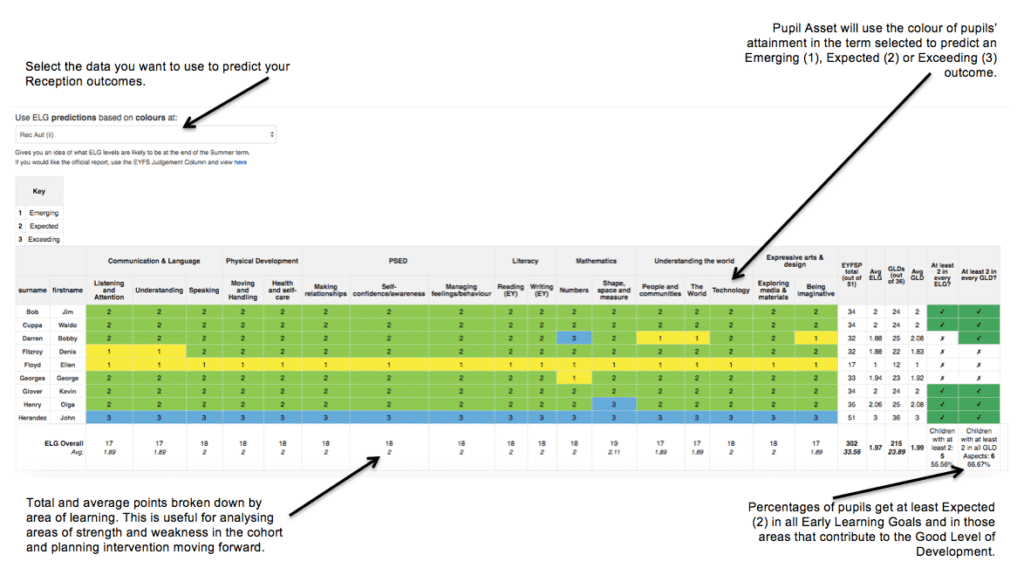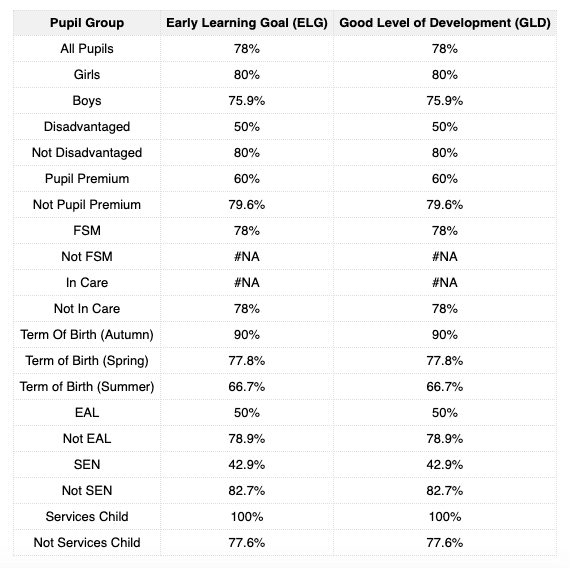Navigate to Analysis > Early Years to find reports specifically designed for tracking attainment and progress during the Early Years Foundation Stage. There are three reports specific to the EYFS:
- Current Aspect Results
- Age-Bands (across Aspects)
- ELG Predictions
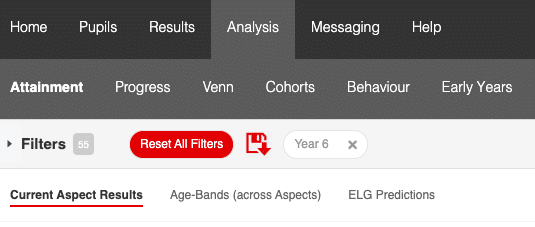
Current Aspect Results
The Current Aspect Results report allows users to choose one EYFS aspect at a time and view attainment over a number of terms or even years, if relevant.
Simply use the Filter to choose the relevant pupils and the desired aspect (shown as Subject).
Display Options can then be used to determine whether to display all pupils’ names; whether to include in between (+ levels); and whether to restrict the spread of results to the current year or not.
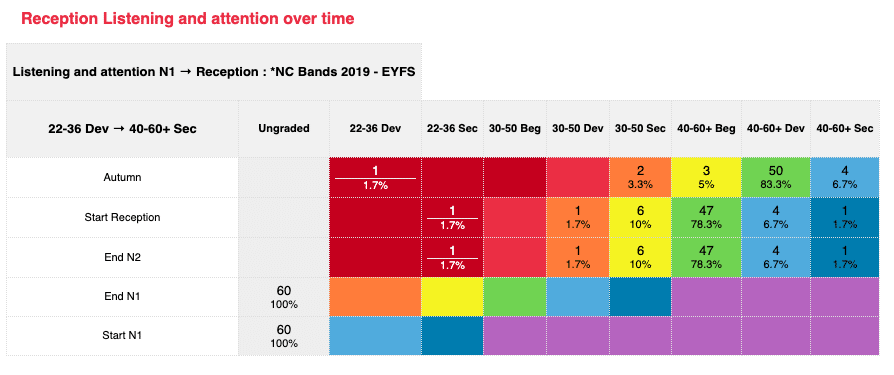
Age Bands (across Aspects)
The Age Bands (across Aspects) report allows users to view multiple aspects in one report, across the age bands that are in use. This is an excellent report in terms of supporting planning and for gap analysis at cohort level.
The Combined Avg. gives an average level for the selected aspects whilst the Combined Min shows the minimum level when all chosen aspects are combined – great for reporting on percentage of pupils working at the expected level across e.g. Prime or Specific areas.
To configure the report, simply use the Filter to choose the relevant pupils. Then, use the Display Options to choose which aspects you would like to include in the report.
Other Display Options include: whether to display all pupils’ names; whether to include in between (+ levels); whether to view results or targets in the report; and Term to Use to choose which term’s data you would like to view.
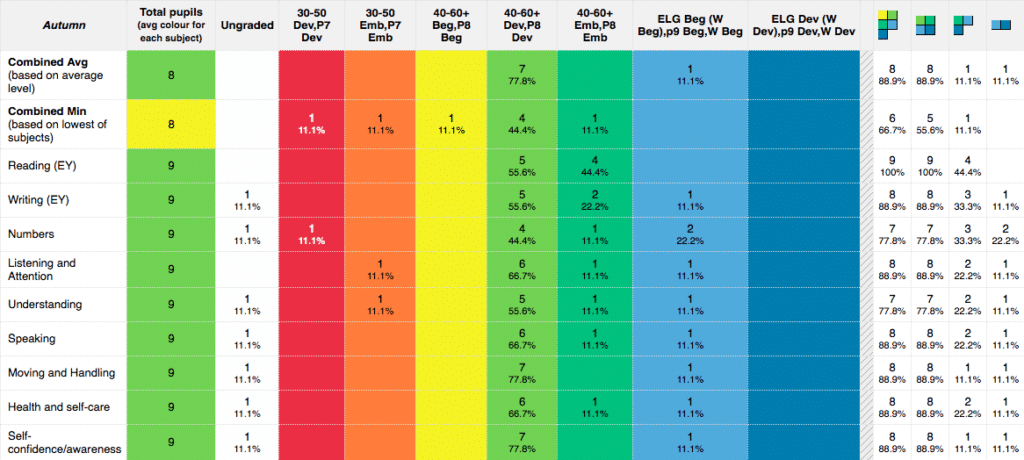
ELG Predictions
As the name suggests, the ELG Predictions report predicts End of Reception outcomes based on a cohort’s current levels of attainment. Assuming that pupils will make expected progress between ‘now’ and the End of Reception, the report uses the colour of each grade to determine whether a pupil will be Emerging (1), Expected (2) or Exceeding (3) as follows:
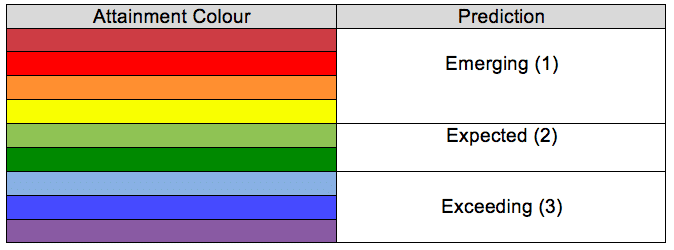
The predictions given are specific to each area of learning assessed meaning that pupils’ strengths and weaknesses can be identified quickly and gaps can be addressed.
These individual area judgements are used to calculate overall outcomes, including the number and percentage of pupils on track to attain at least Expected (2) in all Early Learning Goals and those that contribute to the Good Level of Development.
At the bottom of this page (you may need to scroll down to see it), is a breakdown of all key cohorts.
